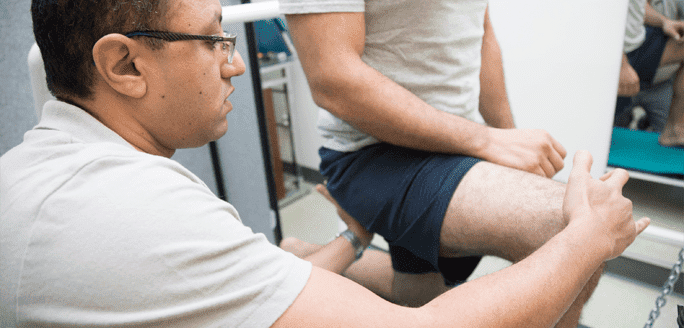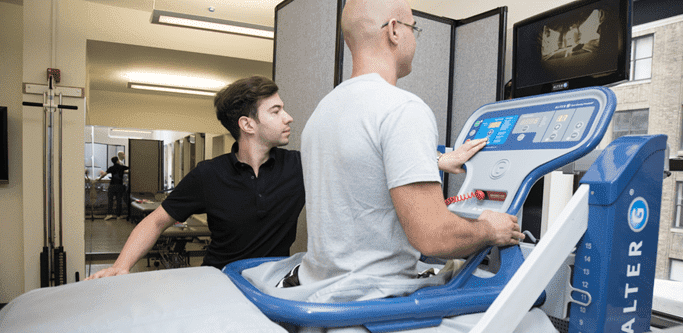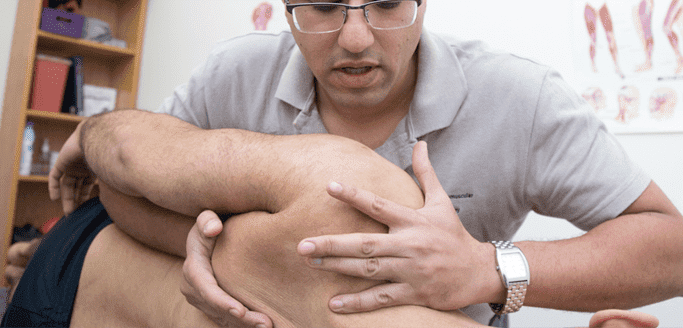New York Dynamic Neuromuscular Rehabilitation & Physical Therapy

Juvenile osteochondritis dissecans can affect the knees of children and is especially problematic among youth athletes. This disorder involves a lesion that appears on the subchondral bone in the knee, and it affects between 15 and 29 children per 100,000. Boys are much likelier to develop the condition than are girls. Without proper assessment and […]
Read More
Ankle sprains are very common injuries, and people who suffer from them may suffer ongoing problems, including recurring sprains. Each year, seven ankle sprains occur for every 1,000 people. Up to address dysfunctions of the joints may result in better outcomes. Joint dysfunctions that can occur with inversion ankle sprains, which happen when the outer […]
Read More
When an athlete is experiencing tennis elbow, the individual may notice pain as soon as the patient bends the wrist, and the condition significantly reduces grip strength and causes tightness in the person’s forearm. If a patient does not receive medical care, the athlete might suffer from fibrosis, which can harden the tissue and decrease […]
Read More
Background Likely as a result of continuous running and cutting while playing field hockey, a 25 year-old female experienced a plantar fascia tear. The tear was discovered via diagnostic imagining after the athlete had been suffering from painful plantar fasciitis for approximately six months. Goals for Rehabilitation After undergoing surgery in order to gait recovery […]
Read More
The Gaelic Athletic Association (GAA) organizes Gaelic games, the two most prominent games being Gaelic football and hurling. Back pain is not uncommon among the athletes, affecting approximately 2.5% to experience back pain if they work in jobs that require periods of physical inactivity. In general, people who play sports are more likely to miss […]
Read More
Each year, between 10 and 13 percent of reported sports-related injuries involve groin pain. Some of these people will be diagnosed with athletic pubalgia, which is also known as a sports hernia. These are injuries that may happen to continue participating in his or her chosen sport. Other conditions that cause groin pain When a […]
Read More
In the center of each of your knees, there’s an anterior cruciate ligament (ACL). These ligaments are positioned diagonally. ACL injuries are fairly common, especially for athletes. To repair the damage, surgeons will sometimes graft tissues onto an ACL. That operation is an ACL reconstruction. After such a reconstruction, it’s easy for the muscles around […]
Read More
Many older adults assume that running is out of the question for their fitness routine unless they have been running for several years. However, experts now suggest that running and high-intensity exercise may be more beneficial for seniors than just walking. Also, they suggest that running can help seniors walk better and with greater ease. […]
Read More
More and more medical experts recommend chiropractic treatment. They recognize that numerous clinical trials have confirmed the efficacy of this method. Research also proves that chiropractors offer competitive pricing and satisfy patients without compromising safety. Long-Term Pain A British study looked at the impact of chiropractic therapy on individuals who experienced chronic pain in their […]
Read More
The pinched nerve theory suggests that muscular or bony obstructions catching a nerve cause pain during movement in the affected area. It also suggests that by removing those obstructions, the pinched nerve would be freed if the condition became a perpetual issue. Today, many top neurophysiologists agree that this is an outdated theory. They suggest […]
Read More